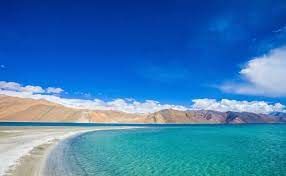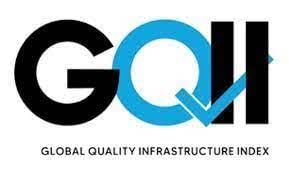UPSC Daily Current Affairs- 13th February 2023 | Current Affairs & Hindu Analysis: Daily, Weekly & Monthly PDF Download
GS-I
Treaty of Alinagar

Context
The Treaty of Alinagar, signed in 1757, was a reluctant agreement signed by Bengal’s Nawab Siraj ud Daula with the English East India Company.
About Treaty of Alinagar:
- The treaty of Alinagar (changed name of Calcutta) was signed between Robert Clive of the British East India Company and the Nawab of Bengal, Mirza Muhammad Siraj Ud Daula.
Terms of the treaty:
- The Nawab would recognize all the provisions of Mughal Emperor Farrukhsiyar’s farman of 1717.
- All British goods that passed through Bengal would be exempt from duties.
- The British would not be hindered from fortifying Calcutta, as well as mint coins in Calcutta.
- The signing of the treaty was one of the events leading up to the famous Battle of Plassey.
- The Nawab was defeated and killed by Clive and his allies.
Significance of the treaty:
- The Treaty strengthened the position of the British in Bengal.
- It laid foundations for the Battle of Plassey.
- It set the stage for British colonial expansion in India, turning what was an economic enterprise into an imperial one.
Source: Indian Express
What is an aubrite meteorite?
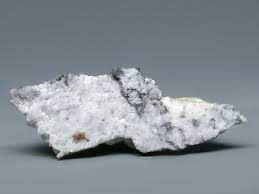
Context
The pieces that fell in the two villages have been named the Diyodar meteorite, after the taluka in which the villages are located.
- This is only the second recorded crash of an aubrite in India. The last was on December 2, 1852, in Basti, Uttar Pradesh.
Key facts about Aubrite meteorites
- Aubrite meteorites are coarse-grained igneous rocks that are formed in oxygen-poor conditions.
- They contain a variety of exotic minerals that are not found on Earth.
- The recently found aubrite meteorite in Gujarat is composed of orthopyroxene.
What are Pyroxenes?
- Pyroxenes are silicates consisting of single chains of silica tetrahedra (SiO 4)
- Pyroxenes such as diopside and jadeite have been used as gems.
- Spodumene was historically used as lithium ore and rocks with pyroxene have also been used to make a crushed stone that is used in construction.
Source: Indian Express
Pangong Tso
Context
India’s first frozen lake marathon is set to be held in Ladakh’s Pangong Tso.
About Pangong Tso:
- Pangong Lake or Pangong Tso is a long narrow, endorheic (landlocked) lake situated at a height of more than 14,000 ft (4,350 meters) in the Ladakh Himalayas.
- The lake is 5 kilometers wide and 134 kilometers long, with one-third of it lying in India & the other two-thirds in China.
- It is the world's highest saltwater lake.
- The lake is also very deep and reaches a maximum depth of almost 328 feet.
- It is also known to change colors, appearing blue, green, and red at different times
Source: PIB
GS-II
Global Quality Infrastructure Index (GQII)
Context
Recently, India’s national accreditation system under the Quality Council of India (QCI) has been ranked 5th in the world in the recent Global Quality Infrastructure Index (GQII) 2021.
- India’s overall QI system ranking continues to be in the Top 10 at the 10th position, with
- the standardization system (under BIS) at 9th and
- The metrology system (under NPL-CSIR) at 21st position in the world.
About Global Quality Infrastructure Index (GQII):
- The GQII ranks the 184 economies in the world on the basis of quality infrastructure (QI).
- The GQII is a database and ranking that allows interested persons to compare the quality infrastructure of different countries worldwide.
- The GQII program is an initiative of the independent consulting firms Mesopartner and Analytics to research and disseminate data on Quality Infrastructure.
- Quality Infrastructure means the international system of metrology, standardization, accreditation and quality-related services (testing, calibration, inspection, verification, training and awareness building).
- GQII rankings are published and presented post-facto for each year based on the data collected till the end of that year.
About Quality Council of India:
- It was established as a National body for Accreditation on recommendations of Expert Mission of EU after consultations in Inter-ministerial Task Force, Committee of Secretaries and Group of Ministers through a Cabinet decision in 1996.
- QCI was set up through a PPP model as an independent autonomous organization with the support of Government of India and the Indian Industry represented by the three premier industry associations, (i) Associated Chambers of Commerce and Industry of India (ASSOCHAM), (ii) Confederation of Indian Industry (CII) and (iii) Federation of Indian Chambers of Commerce and Industry (FICCI).
- QCI is a non-profit organization registered under the Societies Registration Act XXI of 1860.
- The Department of Industrial Policy and Promotion, Ministry of Commerce and Industry was designated as the nodal point for all matters connected with quality and QCI to structure and help implementation of the Cabinet decision.
- It is operated through the constituent Boards of QCI, primarily the National Accreditation Board for Certification Bodies (NABCB), which provides accreditation to the certification, inspection, and validation/verification bodies.
- The National Accreditation Board for Testing & Calibration Laboratories (NABL), which provides accreditation to the testing, calibration and medical laboratories.
Source: The Hindu
National Commission for Safai Karmacharis
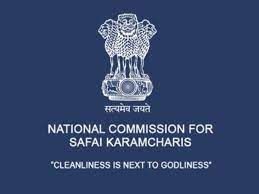
Context
The government informed that there is no proposal to convert National Commission for Safai Karmacharis into a statutory body.
About the National Commission for Safai Karmacharis:
- The National Commission for Safai Karamcharis (NCSK) is currently a non-statutory body.
- It investigates the conditions of Safai Karamcharis in India and makes recommendations to the Government of India.
- It was constituted in 1994 as a statutory body for a three-year period under the NCSK ACT, 1993.
- It continued till February 2004, when the relevant Act expired.
Functions of the commission:
- recommending programmes to the Central Government to eliminate inequalities in status and facilities, and to promote opportunities for Safai Karamcharis.
- studying and evaluating the implementation of the programmes and schemes for the social and economic rehabilitation of Safai Karamcharis.
- Investigating specific grievances and take suo moto notice non-implementation of:
- programmes or schemes in respect of any group of Safai Karamcharis;
- decisions, guidelines or instructions, aimed at mitigating the hardship of Safai Karamcharis with measures for the social and economic upliftment of Safai Karamcharis;
- the provisions of any law in its application to Safai Karamcharis,
- take up such matters with the concerned authorities or with the Central or State Governments;
- make periodical reports to the Central and State Governments
- In the discharge of its functions, NCSK can demand information from any Government or local or other authority.
- As per mandate of National Commission for Safai Karamcharis identification of safai karamcharis has not to be done by them.
- Sanitation is a state subject and no central data is maintained in this regard.
National Safai Karamcharis Finance and Development Corporation:
- NSKFDC is a not-for-profit company under the Ministry of Social Justice and Empowerment.
- It aims to uplift the Safai Karamcharis, Scavengers and their dependents socially and economically.
- The Prohibition of Employment as Manual Scavengers and their Rehabilitation Act, 2013
- The Act aims to eliminate insanitary latrines (those not connected to pits/septic tanks/sewage lines) alongside tracking the rehabilitation of manual scavengers in other occupations and conducting periodic surveys.
- To eliminate this practice, the act has provisions for stringent penalties, for direct or indirect employment of any person in hazardous cleaning of sewers or septic tanks by any person, local authority or agency.
- For example, even the first instance of its contravention is punishable with imprisonment up to two years or fine up to Rs 2 lakh or both.
- If a worker dies while performing such work, even with safety gear and other precautions, the employer is required to pay compensation of Rs 10 lakh to the family.
Source: PIB
GOBAR-Dhan Scheme

Context
Union Finance Minister has announced 500 new ‘waste to wealth’ plants for promoting a circular economy with a total investment of Rs 10,000 crore under the GOBAR-Dhan scheme.
About GOBAR-Dhan Scheme:
- Galvanizing Organic Bio-Agro Resources (GOBAR)-Dhan was launched by the Government of India in April 2018 as a part of the biodegradable waste management component under the Swachh Bharat Mission-Gramin.
- The scheme intends to positively impact village cleanliness and generate wealth and energy from cattle and organic waste.
- The main focus areas of GOBAR-Dhan are to keep villages clean, increase the income of rural households and generate energy and organic manure from cattle waste.
- The Sustainable Alternatives towards Affordable Transporation (SATAT) scheme by the Ministry of Petroleum and Natural Gas (MoPNG) encourages entrepreneurs to set up CBG plants produce and supply CBG to oil and gas marketing companies (OGC/OMC) for selling it as automotive and industrial fuels.
About Sustainable Alternative Towards Affordable Transportation (SATAT):
- It is an initiative aimed at setting up of Compressed Bio-Gas production plants and make it available in the market for use in automotive fuels by inviting Expression of Interest from potential entrepreneurs.
- The initiative was launched in October 2018 by the Ministry of Petroleum & Natural Gas in association with Public Sector Undertaking (PSU) Oil Marketing Companies (OMC) viz. Indian Oil Corporation Ltd., Bharat Petroleum Corporation Ltd. and Hindustan Petroleum Corporation Ltd.
- It aims to produce compressed biogas (CBG) from Waste and Biomass sources like
- agricultural residue, cattle dung, sugarcane press mud, Municipal Solid Waste(MSW) and sewage treatment plant waste and make CBG available in the market for use as a green fuel.
- Compressed Bio-Gas (CBG) plants are proposed to be set up mainly through independent entrepreneurs.
- CBG produced at these plants will be transported through cascades of cylinders to the fuel station networks of OMCs for marketing as a green transport fuel alternative.
Source: The Economic Times
GS-III
Exercise TARKASH
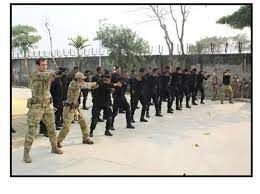
Context
Sixth edition of joint exercise TARKASH recently concluded by The National Security Guard (NSG) and US Special Operations Forces (SOF).
About Exercise TARKASH:
- The exercise for the first time included “Chemical, Biological, Radiological and Nuclear (CBRN) terror response” in its drill.
- The objective was to rapidly neutralise the terrorists, rescue the hostages safely and deactivate the chemical weapons being carried by the terrorists.
Chemical, Biological, Radiological and Nuclear (CBRN) Weapons:
- CBRN weapons are also classified as weapons of mass destruction.
- They have been used by States and terror elements in the past.
- The most recent use of CBRN in the form of a sarin gas attack was witnessed in Syria in 2017 when more than 100 people died.
International Treaties related to WMD:
- The use of chemical, biological, and nuclear weapons is regulated by a number of international treaties and agreements.
Among them are the:
- Geneva Protocol, 1925, that banned the use of chemical and biological weapons
- Biological Weapons Convention, 1972, and Chemical Weapons Convention, 1992, which put comprehensive bans on the biological and chemical weapons respectively.
- India has signed and ratified both the 1972 and 1992 treaties.
- There are very few non-signatory countries to these treaties, even though several countries have been accused of non-compliance.
- The use and proliferation of nuclear weapons is regulated by treaties such as Nuclear Non-Proliferation Treaty (NPT) and the Comprehensive Test Ban Treaty (CTBT).
Source: Indian Express
Who are Mutual Fund Trustees?

Context
The capital markets regulator Securities and Exchange Board of India (SEBI), recently proposed to review the role and accountability of trustees of mutual funds with an aim to protect unitholders’ interests.
About Mutual Fund Trustees:
- The trustees serve as an independent body to protect the interests of the investors and ensure compliance with the SEBI Mutual Fund regulations.
- Powers and Functions:
- The Board of trustees or trustee company holds the property of the mutual fund in trust for the benefit of the unit holders.
- They appoint an Asset Management Company (AMC) to float schemes for the mutual fund and manage the funds mobilized under various schemes.
- The trustee will set the responsibilities of the AMC and monitor any new scheme that is introduced.
- The trust also ensures that all the key personnel of a mutual fund is appointed with adequate qualifications and skills.
- It has the authority to request any information from the AMC pertaining to the operations of the fund.
- The trustee is also authorized to initiate action against the AMC or even penalize the AMC if SEBI regulations are not complied with or if the interests of the unit holders are not protected.
- Structure:
- Every mutual fund must have a minimum of 4 trustees, or they can appoint a trustee company with a minimum of 4 directors.
- Two-thirds of the trustees will have to be independent.
- Trustees cannot be appointed from within the same group to which the AMC belongs.
What is an Asset Management Company (AMC)?
- The AMC is the investment manager of the trust.
- It takes care of the day-to-day operation of the mutual fund and manages the investors' money as well.
- The AMC consists of the Chief Investment Officer, the fund managers and analysts, who are together responsible for managing the various schemes launched.
Source: The Hindu
|
38 videos|5288 docs|1117 tests
|
FAQs on UPSC Daily Current Affairs- 13th February 2023 - Current Affairs & Hindu Analysis: Daily, Weekly & Monthly
| 1. What is the significance of GS-I, GS-II, and GS-III in UPSC exams? |  |
| 2. What are the important topics covered in GS-I, GS-II, and GS-III papers? |  |
| 3. How can I prepare effectively for GS-I, GS-II, and GS-III papers in UPSC exams? |  |
| 4. Are the GS-I, GS-II, and GS-III papers in UPSC exams tough? |  |
| 5. Can I score well in UPSC exams by focusing only on GS-I, GS-II, and GS-III papers? |  |

